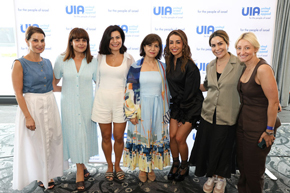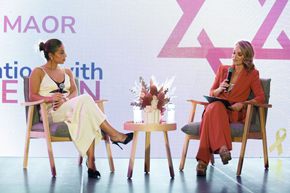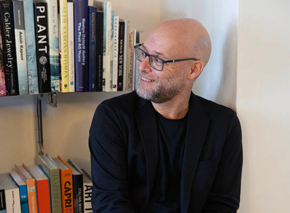New South Wales v Victoria: A tale of two systems
Part Two of a three-part series: A comparison between NSW and Victoria’s institutional child protection reforms.
Part 2 – Victoria

Vivien Resofsky
We have heard a lot about the role of Rabbis, in relation to the child sexual abuse response crisis. Now, two years later, as the Royal Commission winds down, Jewish communal leaders as well as rabbinic leaders were called by the Royal Commission for another public hearing. This time, it was to ask questions of our communal bodies about the reform they have implemented due to revelations of the initial Royal Commission Hearing,
As leaders of NSW and Victorian roof bodies leaders answered questions, I came to realise that each state has responded differently to crisis.
In Victoria, the communal response to child sexual abuse began in 2005, when the Jewish Taskforce Against Family Violence and Sexual Assault (JTAFV) took on the role of leading the community to prevent, recognize and respond to child sexual abuse.
In its submission to the Family Violence Royal Commission, the JTAFV stated that it operates independently, as well as interdependently, with Jewish Care, RCV Hatzolah and JCCV. Effectively the strategies implemented by the JTAFV have been supported by these communal organisations.
The JCCV Child Protection Reference Group was established in 2012 at the time of the growing publicity surrounding child sexual abuse at Yeshivah College. Prior to that, institutional abuse and how to prevent it was excluded from the community campaign that began in 2005.
The Reference Group’s aimed to reach the entire community and offered training to Jewish organisations that included education about child protection policies and procedures.
As NSW was responding to the communal child sexual abuse crisis by establishing a task force in Victoria the JCCV’s Child Protection Reference Group was disbanded after a few years of operation. The JCCV deemed that it had finished its work.
Much has been said about changing culture. Dr Gerry O’Hanlon SJ, Adjunct Associate Professor of Theology, Loyola Institute, Trinity College Dublin, Ireland appeared at the Royal Commission for case study 50. He spoke about the challenge of changing culture.
“When I talk about change in culture and organisation, … organisational theorists have this maxim … they say culture eats strategy for breakfast.
Dr Gerry O’Hanlon’s message is that it is very easy to bring in new rules and new structures, but basically when you are trying to sell it to your constituency, they will be saying things like, “Well, this is how we do things around here”, and so there is a constant need to monitor whether the new rules are actually being implemented and whether the culture hasn’t proved more resistant than would be proper. Source: Transcript on the RC webpage for case study 50.
Leibler Yavneh College a Victorian Jewish day school made the following comment in relation to the challenge of transforming a school to be Child Safe.
“Schools face the daunting task of managing an ever-growing list of compliance requirements. All are important, but some have the potential to greatly impact on the lives of our students.
Our College sought to proactively develop a higher standard of child protection and conducted an exhaustive search of available resources. We chose Child Wise to assist us with this process. Child Wise provided outstanding support and guidance as we progressed through the validation process. Assistance was freely offered as we developed a myriad of updated policies and considered new avenues to improve our child safety protocols.
The Child Wise team addressed our Board and dedicated time to detail the important changes to our College staff and our students. We are grateful to the Child Wise team in assisting us complete the comprehensive process leading to our proud listing as a Child Wise school.”
https://www.childwise.org.au/page/38/awards
Victoria’s reform agenda
Counsel for the 2017 Royal Commission asked a question that reflected the essence of the challenge faced by our communal organisations.
“It is one thing to have policies to promote child protection, but there also needs to be a culture within an institution, which is protective of children. How do you embed child protection within the culture of the institution?”
Jennifer Huppert stressed that In Victoria, the JCCV does not dictate to its affiliates rather it tries to influence.
“It is an ongoing process of training and making people aware of the issues around child protection. We provide education and services to our affiliate organisations but we do not direct affiliates – so that the culture of an organisation is transformed to put child protection at the forefront.”
Jennifer Huppert, offered JCCV strategies: “From a community perspective, we form the view that our organisation must do what it can to encourage and lead by example, so that the JCCV has adopted a Child Safe Policy which is consistent with the Vic. Government Child Safety Standards and we are encouraging our [affiliated] organisation to do that.”
https://www.jccv.org.au/uploads/JCCV%20Child%20Safe%20Policy%20Nov%202016.pdf
The preparation of a child protection policy is not a matter of setting a good example or modelling. In Victoria, a child protection policy is compulsory under the Child Safety and Wellbeing Act.
Victorian organisations that provide services to children are required to have a child protection policy. This applies to organisations that exercise care, supervision or authority over children whether as part of its primary function or otherwise.
The JCCV’s Child Safe Policy states that it is protecting children/young people who attend JCCV events, JCCV premises or participate in an JCCV programs. However, the policy does not elaborate on the activates and programs that it provides for children and young people, nor the risk associated with these activities.
There are 7 standards that must be deal with in a Child Safe Policy, each one important and each one must be applied to the context of the individual organisation. The JCCV Child Protection policy details a code of conduct but the other standards are minimally mentioned.
Details applicable to the activities that the JCCV provides for children are not mentioned nor are the risks mentioned. Details of strategies to mitigate risks that associated with activities are not applied to the way in which the JCCV protects children who partake in their programs.
Best practice would be for an organisation’s child protection policy to be accredited. I don’t believe that the JCCV Child Safe policy has been accredited and I don’t believe it is of a standard to be accredited – whether it is used as a model for service provider to children or as an example of a roof body.
Vivien Resofsky is a social worker whose specialist training (in both Australia and the USA) underpins her extensive practical professional experience in areas relating to child protection and domestic violence. She has worked with children and families at Jewish Care, The Women’s Domestic Violence Crisis Service and DHS Child Protection and is an accredited trainer of several programs.
Her writing has appeared in numerous publications; for the Australian government; and for the wider media, including The Herald Sun, The Courier Mail, and The AJN. Vivien is also the author of the highly regarded Wesley World series of books which are parent/child guides to personal safety.
Vivien’s work, which has focused primarily on child abuse in the past ten years, draws together research and evidence-based theory, practical experience and programmes with evaluated, evidence-based success.
The series concludes on Sunday







